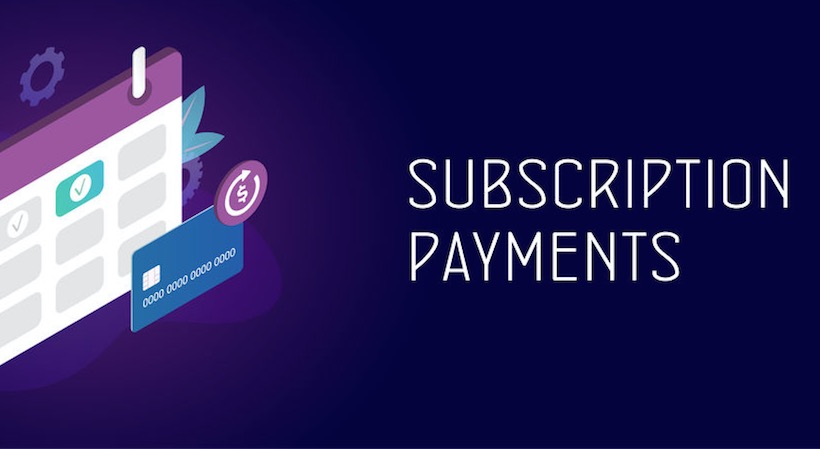As an online merchant, you’re constantly looking for new opportunities to generate sales and revenue with minimal upfront investment. To that end, dipping into the subscription market could prove to be an incredibly lucrative strategy.
The number of subscription services on the market exploded in recent years: one study finds the market for the subscription box model grew nearly 900 percent between 2014 and 2018.
Other product categories, including subscription services and digital goods, showed comparable growth during the same period. The data suggests that half of U.S. consumers have at least one subscription for either digital or physical goods and services.
Some skeptics suggest consumers have a critical mass for subscriptions. Many indicators we see, though, suggest otherwise.
StartupNation exclusive discounts and savings on Dell products and accessories: Learn more here
Advantages of the subscription business model
The subscription model offers some significant advantages. For starters, consumers appreciate the convenience and flexibility provided by these services. And on the merchant side, businesses enjoy a reliable, monthly revenue stream. It’s a great method for ensuring customer loyalty and retention, and for developing a personal connection between customers and your brand.
The popularity of subscription services with millennial and Gen Z consumers, in particular, leads some to describe the increasingly-subscription-centric market as an “everything as a service” (or XaaS) environment.
I’m not suggesting literally “everything” will be available on a subscription basis one day, but the subscription model will reach most corners of our lives in the new decade.
Recurring billing is popular with consumers, and is also good for your cash flow, but it does have its challenges. For instance, we can tie the growth in subscription services directly to an increase in chargebacks for merchants.
What are chargebacks?
Chargebacks are a payment reversal carried out by a cardholder’s issuing bank. These disputes are a consumer protection mechanism to protect buyers against fraud and abuse.
In recent years, though, chargeback filings have exploded at an exponential rate. With each dispute filed, you face the threat of losing sales revenue and merchandise, plus paying costly fees.
Payment disputes aren’t unique to the subscription billing model. That said, they are especially common in this market; so much so, in fact, that merchants engaged in recurring transactions are usually considered “high risk” by acquiring banks. This is partly due to the passive nature of recurring billing, with the customer somewhat detached from the transaction process.
There are several reasons why you might get hit with a recurring billing chargeback. Criminal fraud, for instance, is usually the first source that comes to mind when people think about chargebacks.
Those committing criminal fraud may use stolen cardholder data to complete purchases, or they may compromise a cardholder’s account and use that access as a means to impersonate a legitimate user. Fraudsters are clever, and they’re always looking for new ways to carry out attacks.
Not all chargebacks are examples of criminal fraud, though. In some cases, a customer may be entitled to a dispute. Some scenarios in which this could be the case include:
- You process a transaction after the customer requests a cancellation
- The charge is higher than what the customer agreed to at the time of authorization
- You didn’t notify the customer of subsequent charges
- The account in question was closed before the sale
Errors and criminal activity are legitimate reasons to file a dispute. More often, though, they’re the product of friendly fraud, rather than any valid reasoning.
Related: WJR Business Beat with Jeff Sloan: Subscription Box Economy
The “set it and forget it” paradox
Friendly fraud occurs when a cardholder files a chargeback without a valid reason to do so. It could be triggered by buyer’s remorse, a misunderstanding regarding merchant policy, or simply out of convenience.
Whatever the case, the result is the same: you lose money.
As mentioned, merchants reliant on a recurring billing scheme are at higher risk for chargebacks. This is due to the “set it and forget it” customer mentality; buyers sign up for a service, then don’t have to think about it again. However, that can lead to some pretty obvious problems.
A customer could enroll in a service, forget about it, then decide it wasn’t a good use of money. The buyer could file a friendly fraud chargeback to recover the funds. Depending on the circumstances, he or she could claw back the funds from every transaction dating back to the beginning of service.
Friendly fraud was a largely-unknown problem at the beginning of the last decade. However, it’s expected to cost businesses upwards of $50 billion in 2020 alone. That’s not accounting for the broader, ancillary costs of chargebacks like false positives, margin compression and higher banking costs. All totaled, this could make chargebacks a $150 billion annual problem globally.
Addressing the chargeback threat
The “set it and forget it” mentality leads to more chargeback requests. And, with the popularity and growing presence of subscription boxes and services, the problem won’t go away.
You need to have strategies in place for contending with chargebacks. The first step is to break disputes down by their three fundamental sources: criminal fraud, friendly fraud and merchant error.
Preventing criminal fraud chargebacks means deploying a multilayer fraud strategy. Criminal activity is not a monolith, so you’ll need a variety of complimentary tools to identify different fraud tactics..
For instance, a comprehensive approach to fraud management should include the following:
- Address verification (AVS)
- CVV verification
- Geolocation
- Fraud scoring
With merchant error, you look to identify and fix the oversights and shortcomings in your policies and procedures that might lead to chargebacks. You should also adopt business best practices to eliminate the risk of chargebacks caused by miscommunication, misunderstanding or accident.
Examples include:
- Providing round-the-clock, live customer service across multiple channels
- Making all contact information easily visible on every page of your site
- Providing clear and comprehensive policies and shipping information
- Ensure billing descriptors are clear and accurately reflect your business
- Set customer expectations with clear product descriptions and detailed photos
Sign Up: Receive the StartupNation newsletter!
What about friendly fraud?
You have plenty of methods at your disposal to prevent chargebacks caused by errors and criminal activity. With friendly fraud, though, it’s more difficult.
Your options are limited when it comes to preventing friendly fraud because friendly fraud is post-transactional in nature. It appears as a legitimate transaction, then becomes fraud only after the sale is done. Unfortunately, most chargebacks, especially in the subscription billing space, tend to be cases of friendly fraud.
Engaging in best practices can stop some cases of friendly fraud. The best you can do to challenge these disputes, though, is to engage them through chargeback representment. This is a complicated and drawn-out process, and the odds of success are dubious, at best. You need to provide evidence to the issuing bank that the cardholder authorized the sale, but for their part, the bank has an incentive to keep cardholders happy by upholding disputes.
The situation regarding chargebacks in the subscription billing market is dynamic and complex. Thus, it calls for a dynamic solution. Whether you manage disputes in-house, or outsource to third-party chargeback specialists, representment should be a core component of a larger anti-fraud strategy.
The subscription service market holds tremendous potential for entrepreneurs. You need the right approach to protect your bottom line and prevent unnecessary loss, though, and that means taking chargeback management seriously, before the problem becomes unmanageable.






